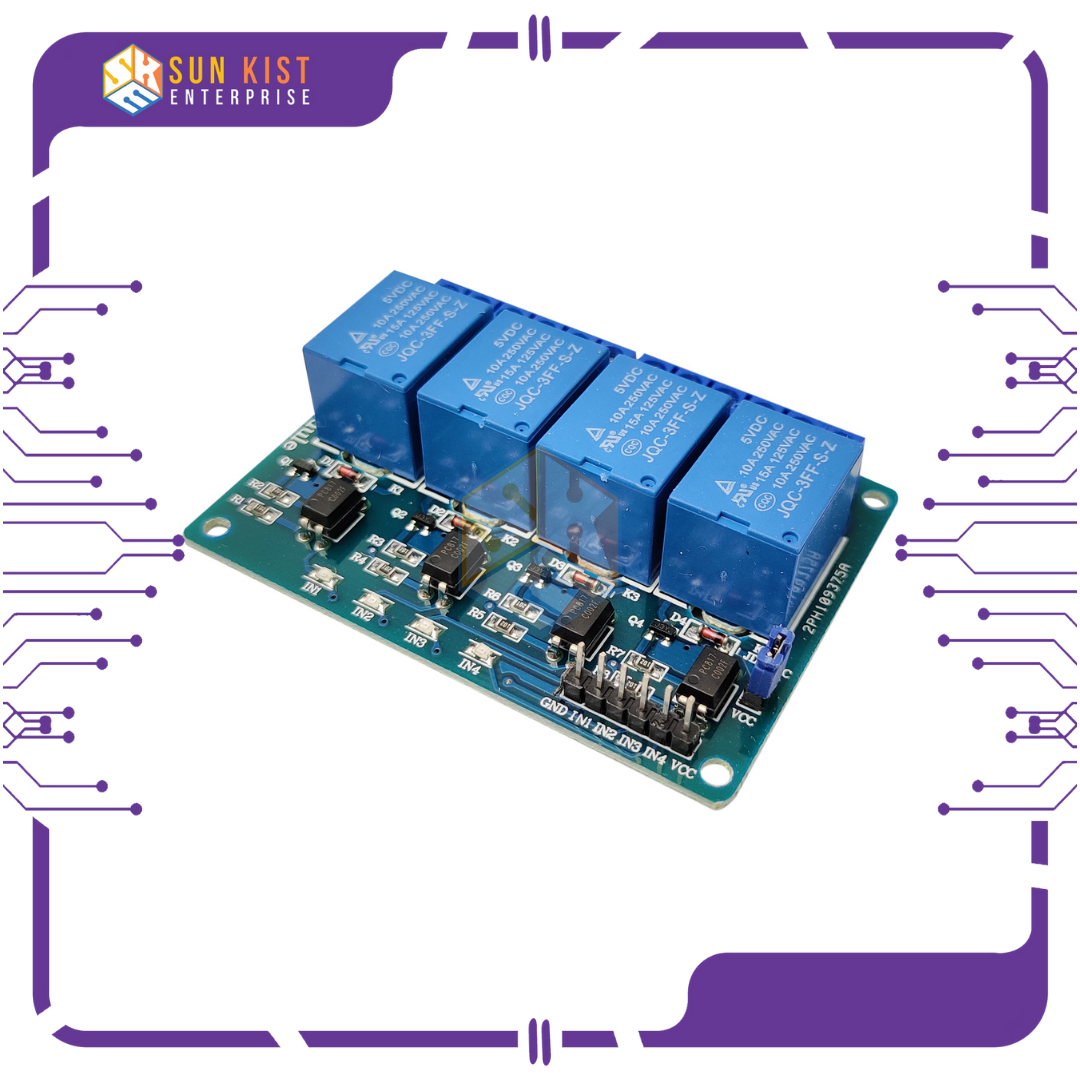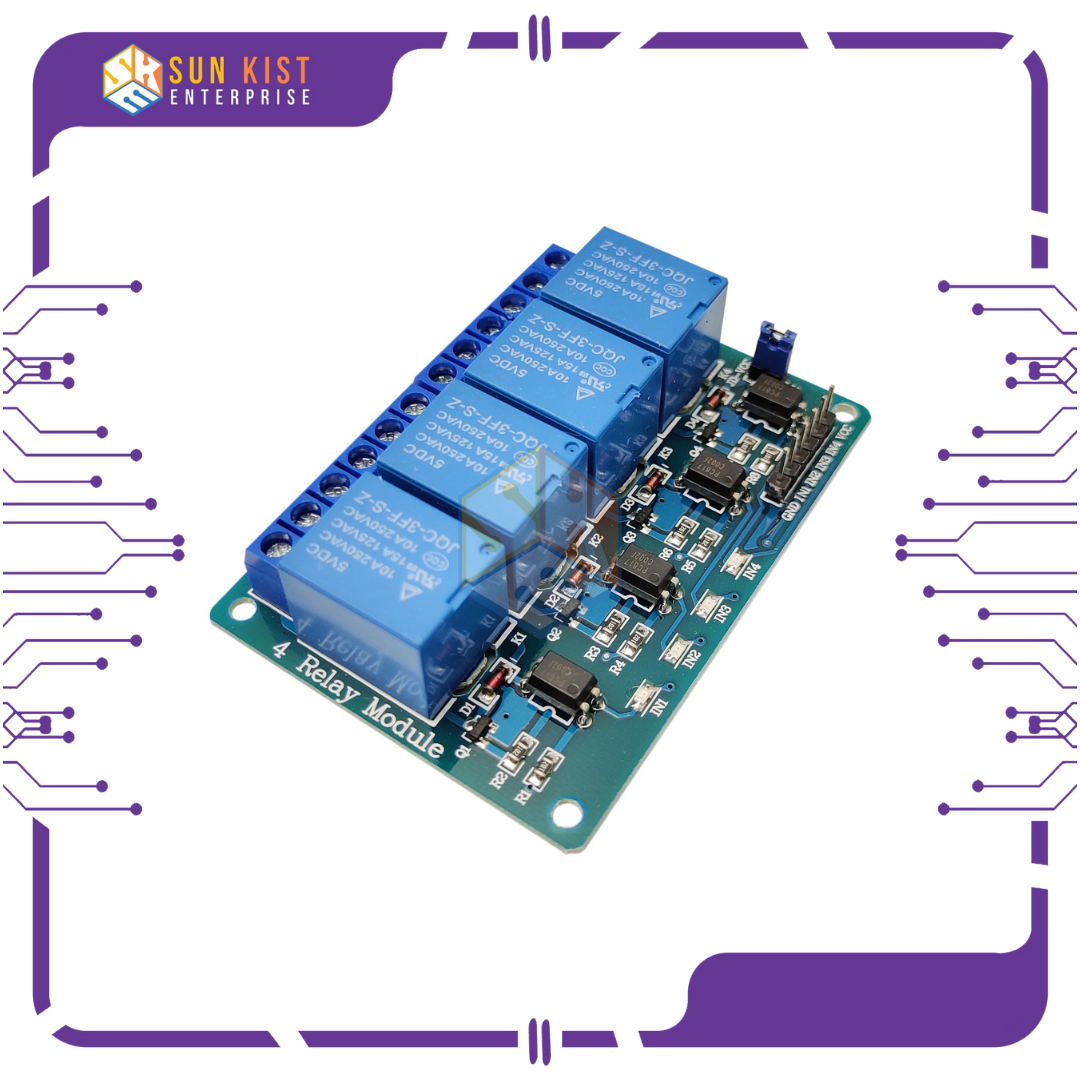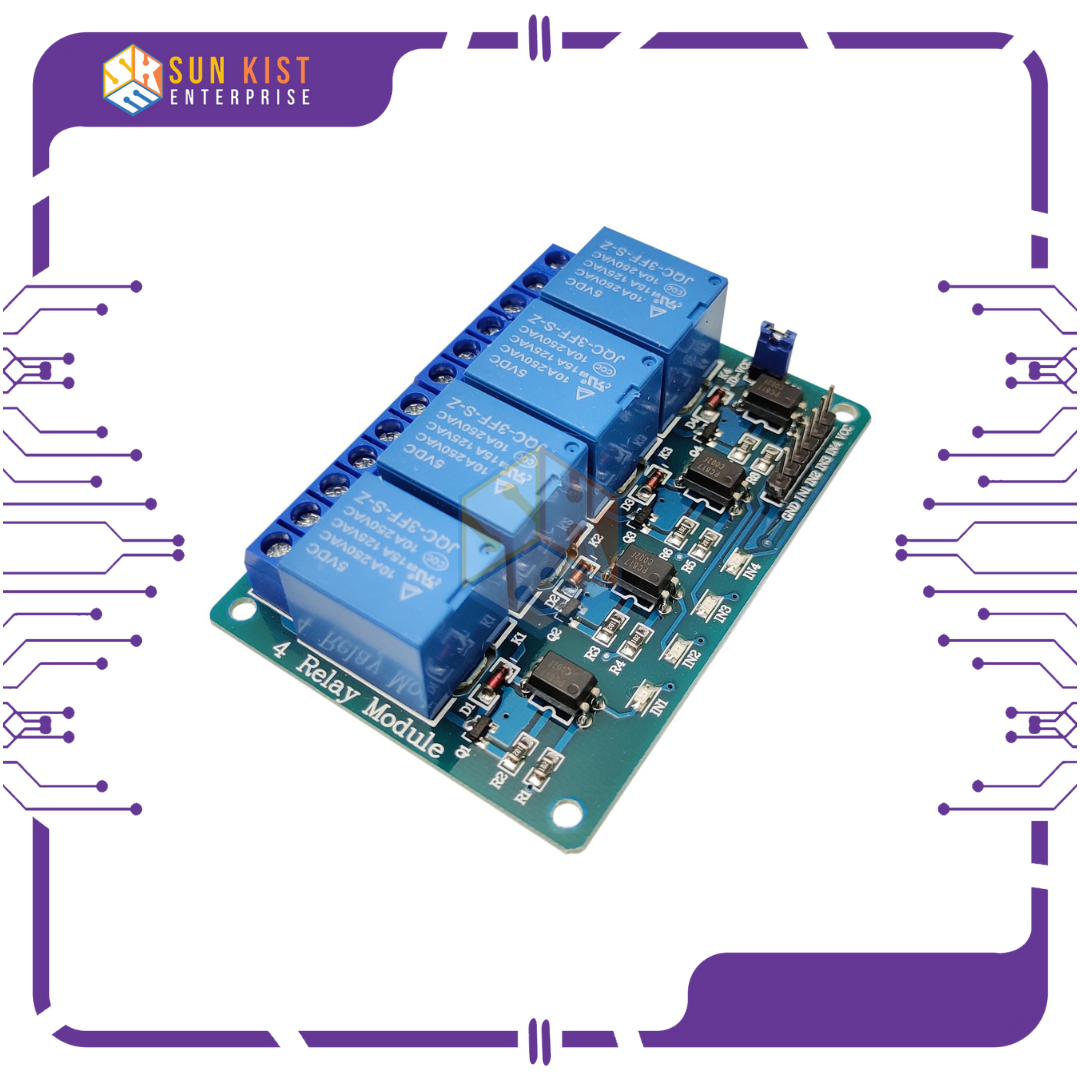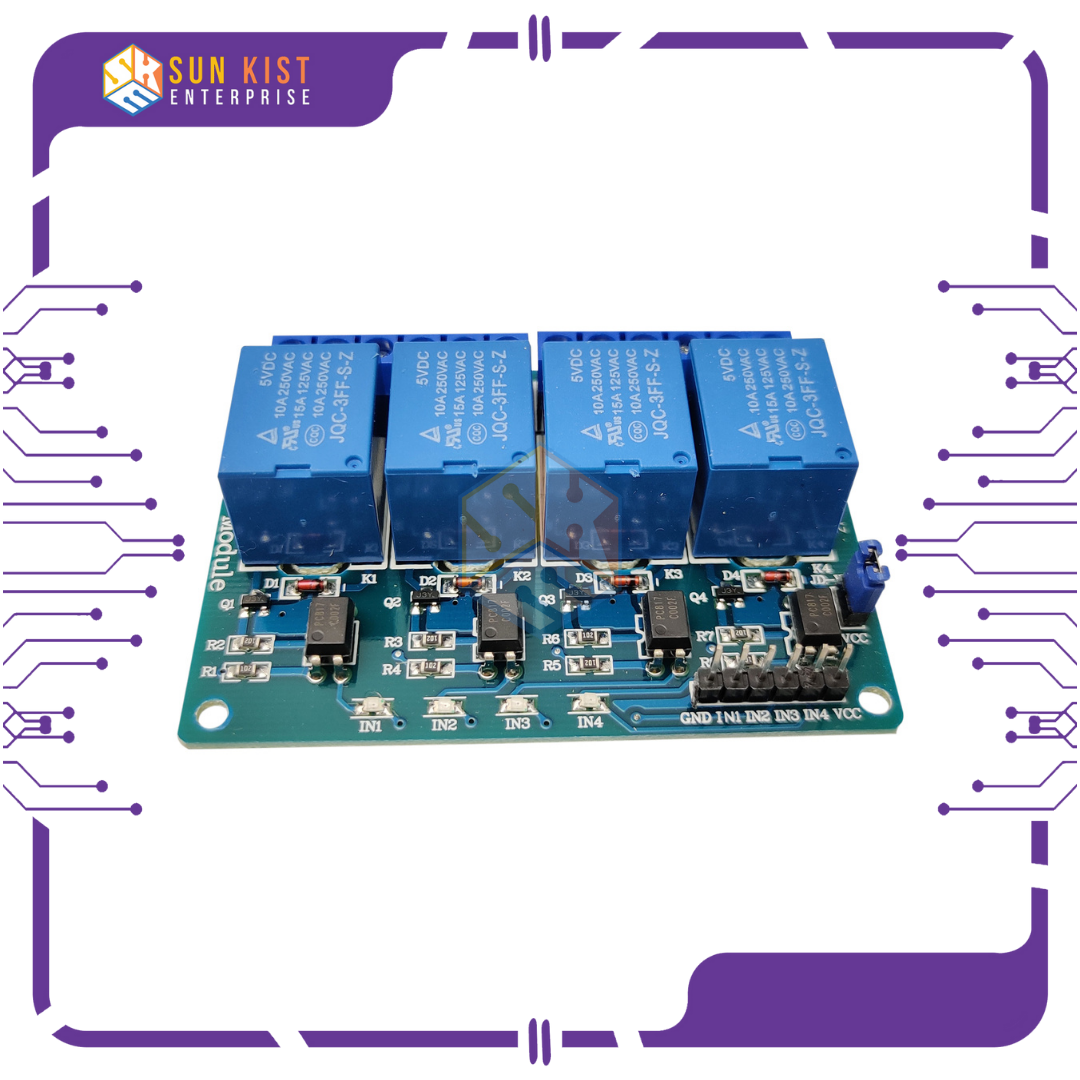Description
A “4-Channel Relay” is a device that consists of four individual relays within a single unit. Each of these relays can be controlled independently to switch electrical circuits on or off. The “5V” in the description typically indicates the voltage at which the relays are operated or controlled. Here’s a breakdown of the information:
1. **4-Channel Relay**: This device includes four separate relays, each of which can control an individual electrical circuit. Relays are used to control high-voltage or high-current devices using a lower-voltage signal.
2. **5V**: The “5V” refers to the operating voltage of the relay module. This means that the control signal needed to activate or deactivate the relays is typically provided at 5 volts. This is a common voltage for compatibility with microcontrollers like Arduino, Raspberry Pi, and other digital control systems.
**Key Features and Applications**:
– **Individual Control**: You can independently control each of the four relays, making it suitable for applications where multiple devices need to be switched on or off separately.
– **High Voltage and Current**: Relays are often used when you need to control high-voltage or high-current loads, such as home automation systems, industrial equipment, or lighting systems.
– **Digital Control**: The 5V operating voltage is suitable for integration with microcontrollers, making it ideal for projects involving IoT (Internet of Things), robotics, and home automation.
– **Input Signal**: These modules typically require a digital input signal to control the relays. When the input signal is active, the associated relay switches, and when it’s inactive, the relay switches back.
– **Applications**: Common applications include controlling lights, fans, pumps, solenoids, and other electrical devices. For example, you can use a 4-channel relay module to control different appliances in your home automation project.
When using a 4-channel relay module, make sure to connect it to an appropriate power source and provide the necessary control signals. Exercise caution when working with high-voltage circuits to prevent electrical hazards.











Reviews
There are no reviews yet.